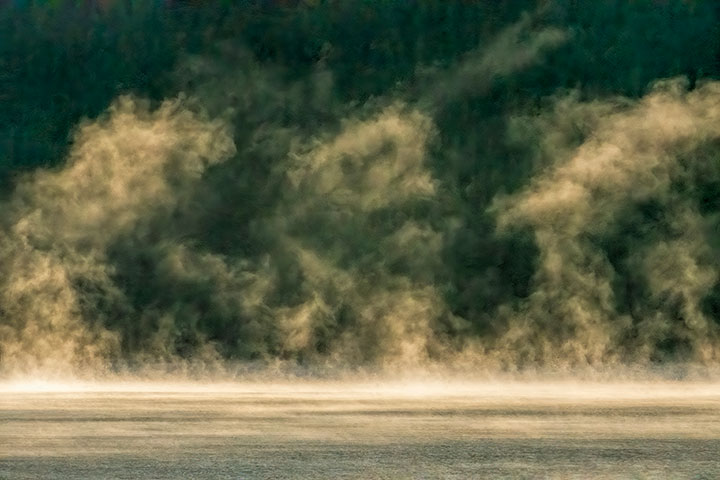Last Sunday, I watched something over the Lake that I had not recalled seeing with such clarity before: two different mechanisms for droplet formation from the same source.
A decade, or so, ago, I wrote a piece about the two mechanisms for droplet condensation. There I criticized teachers for getting it wrong, by saying that cold air cannot hold as much water vapour as warm air. This was despite it having been known for two centuries what was actually happening. That essay is called condensation. Here, I will just accept that, and go with what is correct.
Condensation might occur when two parcels of sub-saturated water vapour mix. Or, it can occur when water vapour is cooled.
Typically, clouds (or fog) near the surface result from vapour mixing — in which different forms of cloud result from different mixing circumstances. In this scene, the cloud (fog) at the Lake’s surface is the result of vapour mixing. It is known as steam fog and can result when quite cold air overlies much warmer water.
Typically, clouds well above the surface form as a result of vapour cooling — in which different forms of cloud result from different cooling circumstances. The convective towers of cloud that arise high over the Lake’s surface is the result from this water vapour cooling.
This scene was a little uncommon. Usually, when cold air flows over warm water in the fall, the high winds cause the convective towers to warp up as steam devils. In this case, the cold air must have arrived overnight and it was now calm. This resulted in convective towers growing out of the steam fog.


Would this happen in the same way over the river? Lake being calm vs river flowing.
Margo, it is the same on a river. The flow of the water is not a particular issue.
Morning fog, what! Cool air over warm water creating morning fog until the air warms and dissipates the fog. Not sure about on Kootenay Lake, but its a common phenomenon on Northern prairie lakes, ponds, and sloughs.
Stu, your morning fog is also known as frost smoke and Arctic sea smoke. It officially is know as steam fog. But, it is always cased the same way: a mixture of sub-saturated warm air adjacent to warm water and sub-saturated cold air that has flowed in. It is found (particularly in late fall and winter) over all high latitude water bodies. It was at the base of my picture.
Hi Alistair
Thanks for the link to your condensation essay, which I enjoyed reading. Your use of the word “evapouration” will stay with me as a helpful pedagogic device!
Take care